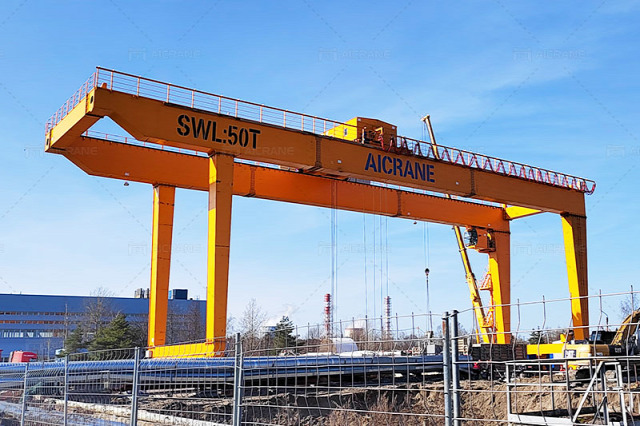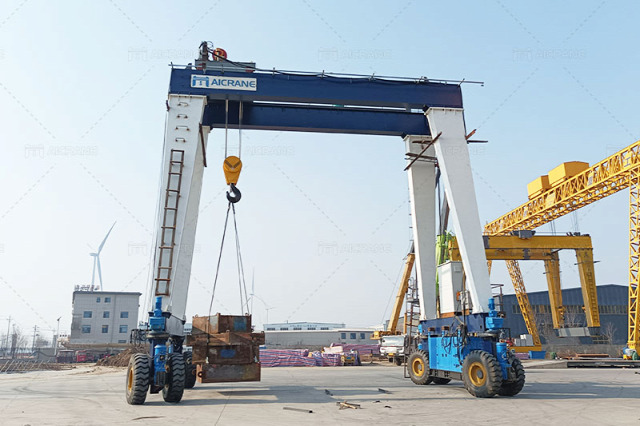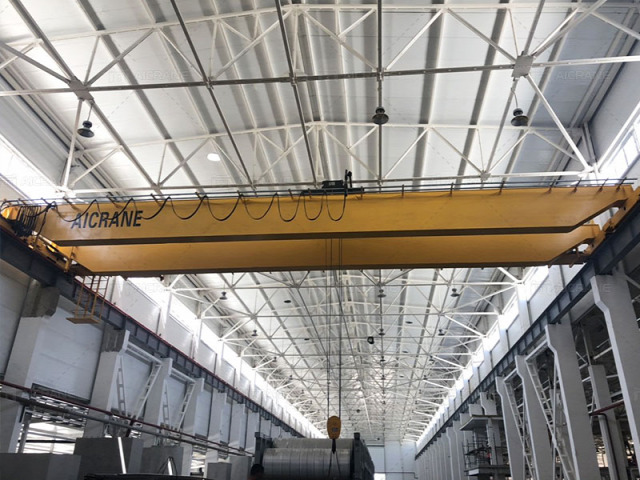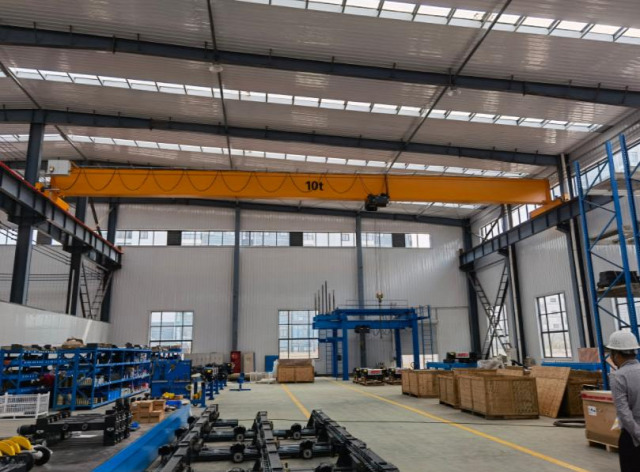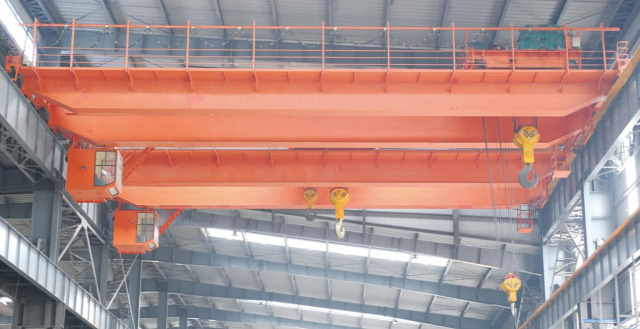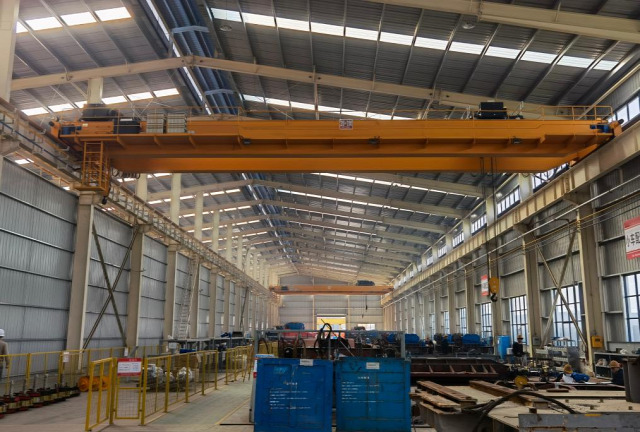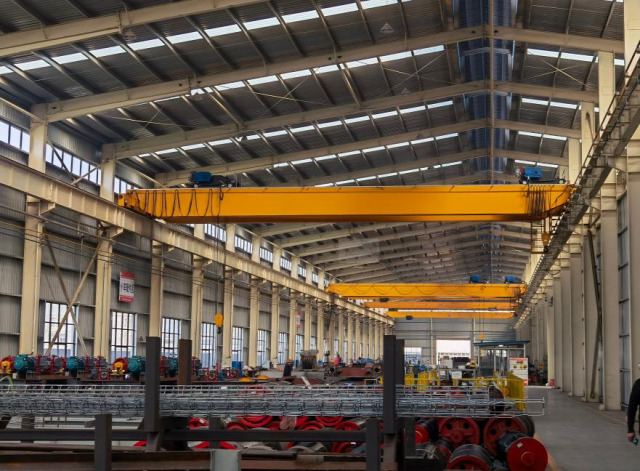When operating a Rubber-Tyred Gantry (RTG) crane, selecting the right spreader beam is essential for the efficiency, safety, and overall performance of your lifting operations. The spreader beam plays a crucial role in distributing the load evenly across the crane’s lifting capacity and preventing damage to both the crane and the load. With a wide variety of spreader beams available, it can be difficult to determine which is the best fit for your specific requirements. This article will guide you through the process of selecting the right spreader beam for your RTG crane, ensuring that your operations run smoothly and safely.
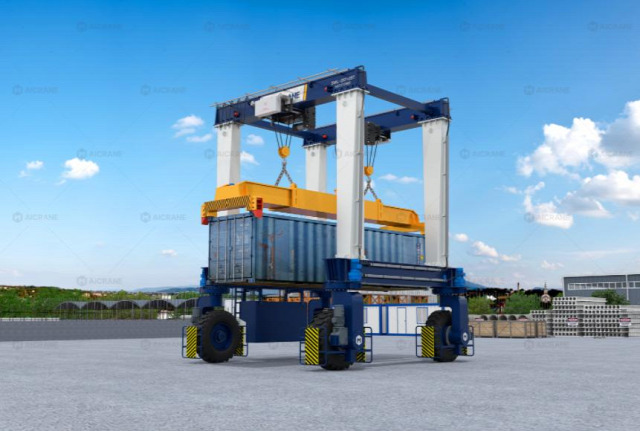
What is a Spreader Beam?
The Function of a Spreader Beam in RTG Cranes
A spreader beam is a type of lifting device used with cranes to evenly distribute the load across multiple lifting points. The spreader beam consists of a horizontal beam attached to the crane with two or more lifting points that help balance and stabilize the load. When used in conjunction with a RTG rubber tyred gantry crane, a spreader beam is essential for handling containers and other large, heavy loads, ensuring that the load does not tip or sway during lifting.
In an RTG crane, the spreader beam's role is critical, as it maintains the stability of the load, distributes the weight uniformly, and minimizes the strain on the crane’s lifting components.
Key Factors to Consider When Choosing a Spreader Beam for Your RTG Crane
1. Load Capacity
The most important factor in selecting a spreader beam is the load capacity of both the RTG crane and the spreader itself. The load capacity is typically the maximum weight that can be safely lifted without risking structural failure. Overloading a spreader beam can lead to crane damage, unsafe operations, or accidents. Therefore, ensure that the spreader beam is rated for the specific weight and load type that you intend to lift with your RTG crane.
Understanding Load Capacity Ratings
The load capacity rating of a spreader beam is determined by the maximum weight it can safely handle. This rating should always exceed the maximum weight of the load being lifted, including any dynamic forces that may be introduced during lifting operations, such as swinging or abrupt movements.
2. Length of the Spreader Beam
The length of the spreader beam will directly impact the load distribution and the way the crane handles the load. In RTG cranes, the spreader beam needs to be long enough to span the container’s width (or the load width) to maintain balance. However, if the spreader beam is too long or too short, it can cause instability during lifting, leading to potential accidents.
Adjustable or Fixed Length
Some spreader beams come with adjustable lengths, allowing for flexibility depending on the load. If you are dealing with a variety of container sizes or other load dimensions, an adjustable spreader beam may be the ideal choice.
3. Weight of the Spreader Beam
The weight of the spreader beam itself can affect the overall lifting efficiency and performance of the RTG crane. A heavier spreader beam will reduce the crane's lifting capacity, as the weight of the spreader itself must be factored into the total load.
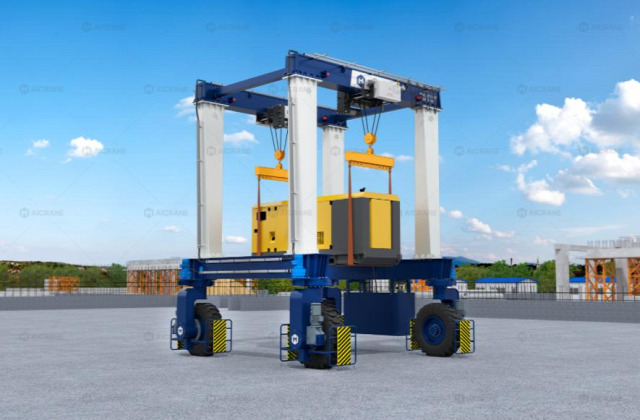
Material Considerations
The material used to construct the spreader beam also plays a significant role in the beam’s weight. Steel is the most common material used for spreader beams due to its strength and durability, but lightweight materials like aluminum or composite materials are available for situations where reducing weight is critical.
4. Load Type and Lifting Configuration
The type of load being lifted with your RTG crane also influences the choice of spreader beam. The lifting configuration (single point, double point, or multi-point) and the type of load (container, bulk materials, etc.) will determine which spreader beam design is most suitable.
Container Handling vs. General Lifting
For container handling, spreader beams are typically designed with two lifting points, while for other types of loads, such as irregularly shaped materials, a multi-point lifting configuration may be necessary to ensure proper load distribution.
5. Lifting Height
The height at which you need to lift the load is another critical factor to consider when selecting a spreader beam. Depending on the specific needs of your operations, you may require a spreader beam that can handle lifting at different heights, or one that features adjustable height settings.
Height Adjustments
Many spreader beams are equipped with adjustable height settings, making them versatile enough for a variety of lifting tasks. If your RTG mobile gantry crane operates in environments with varying load heights, an adjustable-height spreader beam may be the right choice.
Material Selection for Spreader Beams
1. Steel
Steel is the most commonly used material for spreader beams due to its strength and durability. Steel beams can handle significant loads and are resistant to corrosion and wear, making them ideal for heavy-duty lifting operations. The main disadvantage of steel beams is that they tend to be heavy, which could limit the lifting capacity of your RTG crane.
2. Aluminum
Aluminum is a lightweight alternative to steel, and it’s an excellent choice for lifting lighter loads or when crane capacity is a limiting factor. Although it is lighter than steel, aluminum spreader beams may not have the same strength or durability as steel ones, making them more suitable for less demanding lifting applications.
3. Composite Materials
Composite materials are increasingly used in modern spreader beam designs. These materials combine the strength of metal with the lightweight characteristics of polymers, offering a good balance between strength and weight. Composite spreader beams can also be corrosion-resistant, which is beneficial in harsh outdoor environments.
Common Types of Spreader Beams for RTG Cranes
1. Fixed Spreader Beams
Fixed spreader beams are designed with a predetermined length and lifting configuration. They are typically used for lifting standard loads, such as containers, and are ideal when the lifting height and load width are consistent. Fixed spreader beams offer the advantage of simplicity and durability, but they may lack the versatility of adjustable beams.
2. Adjustable Spreader Beams
Adjustable spreader beams offer flexibility and can be configured to different lengths or lifting configurations depending on the specific load. This type of beam is ideal for operations that handle a variety of load types or have fluctuating lifting requirements. The ability to adjust the beam length allows for more precise load distribution.
3. Multi-Point Spreader Beams
Multi-point spreader beams are used for lifting loads that have multiple lifting points or require more complex lifting configurations. These beams are ideal for lifting irregularly shaped loads or for applications where the load’s center of gravity must be carefully managed.
Safety Considerations
1. Regular Inspections and Maintenance
Regular inspections of the spreader beam are essential to ensure that it is functioning correctly and free from damage. Always inspect the beam for signs of wear, corrosion, or deformation, and address any issues immediately. Additionally, ensure that the beam is properly lubricated, if necessary, to prevent unnecessary wear and tear.
2. Operator Training
Proper operator training is essential for safe and efficient use of the RTG crane and spreader beam. Operators must be familiar with the load limits, proper rigging techniques, and safe lifting practices to prevent accidents.
Conclusion
Choosing the right spreader beam for your RTG crane is crucial for maintaining safety, efficiency, and performance in your lifting operations. By considering factors such as load capacity, beam length, weight, lifting configuration, and material selection, you can ensure that your spreader beam is the perfect fit for your specific needs. Always prioritize safety by adhering to weight limits, performing regular inspections, and training operators to handle the spreader beam properly. By making the right choice, you can significantly improve the effectiveness and longevity of your RTG crane operations.


